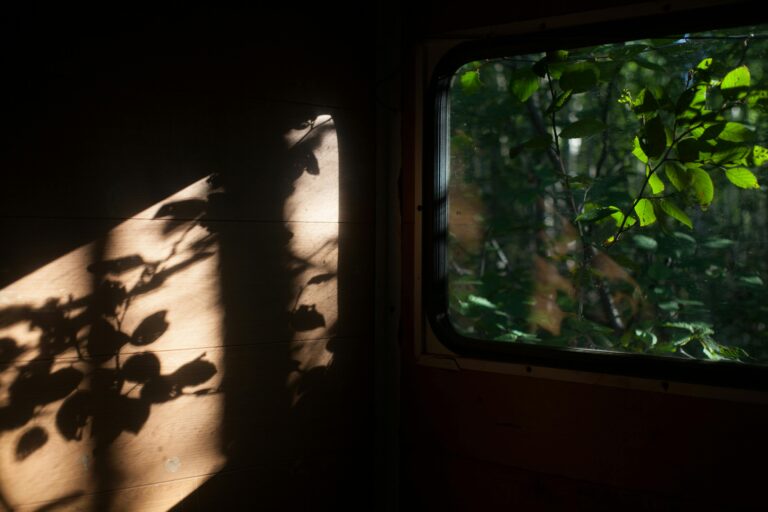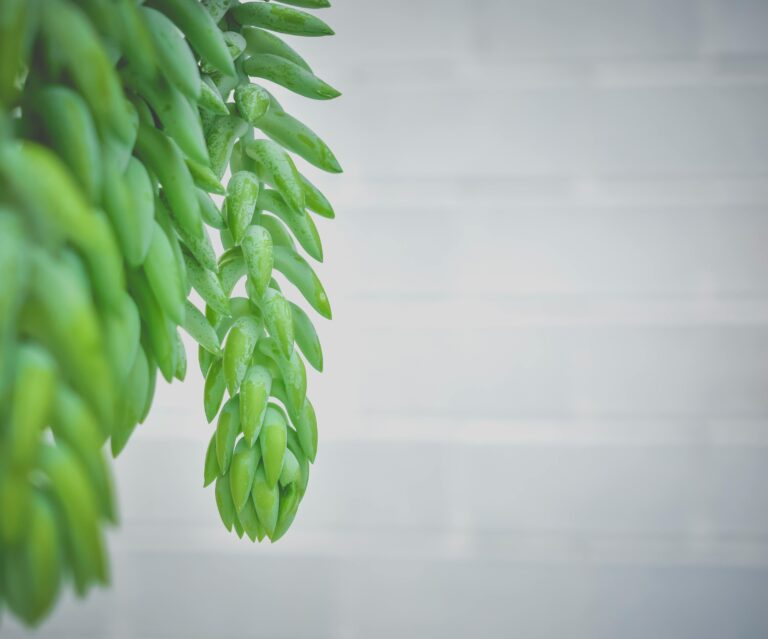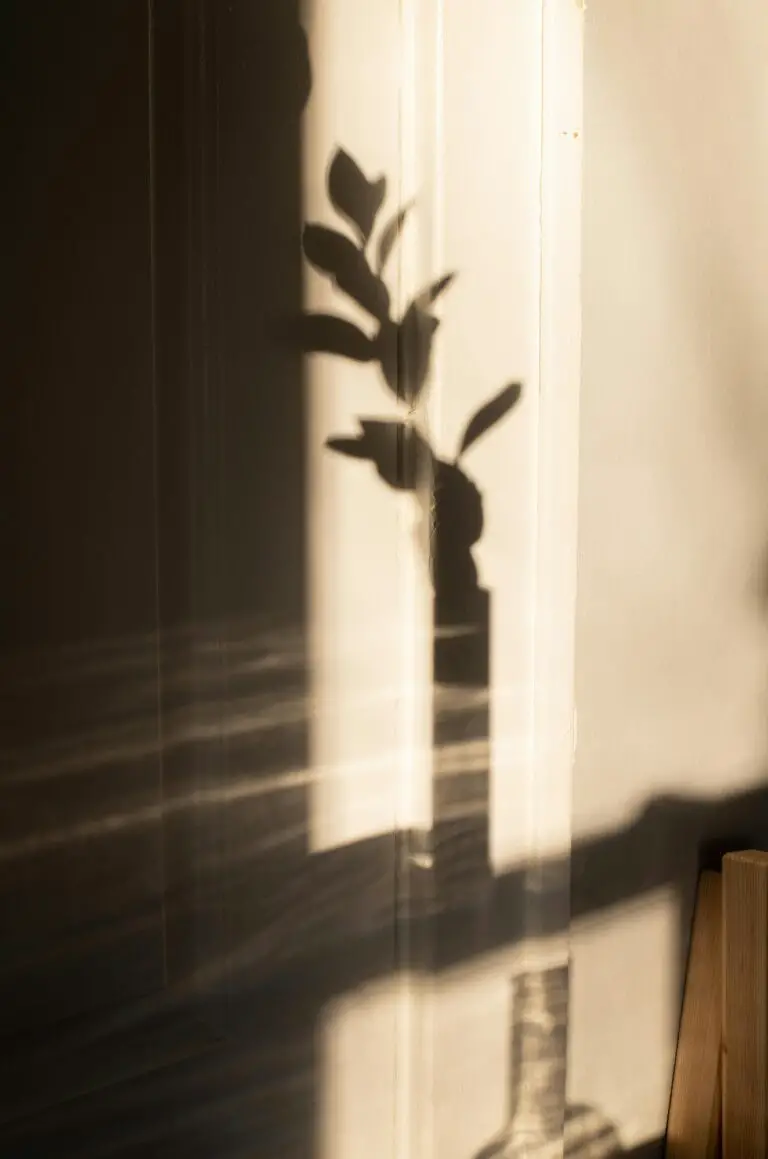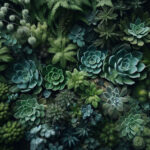Introduction to Sedums and Shade
Welcome to the enchanting world of sedums, an ever-diverse family of succulents that grace our gardens with their robust forms and resilient nature. Typically, these hardy beauties seek the sun, soaking up its rays to fuel their vibrant displays. However, the plot thickens when we delve into the niches of our gardens that bask in the quiet coolness of shade. Can sedums truly flourish without basking in the full glare of sunlight? Let’s delve into the life of shade-loving sedums and unearth some surprising truths.

Picture this: you’ve got a shady nook in your garden, maybe under a leafy tree or beside a north-facing wall, and you wonder, “What could possibly bloom in this dimmer domain?” Here’s where shade-friendly sedums make their grand entrance. Contrary to their sun-loving cousins, some sedums have not only adapted to but also thrive in shaded environments. They are the undercover agents of the plant world – versatile, adaptable, and ready to transform your shaded spots into an oasis of tranquility and subdued hues.
Intrigued by these shadowy characters? You’re not alone. Gardeners are often surprised to learn that some sedum varieties don’t just survive in low-light conditions – they prosper. For instance, the enchanting ‘Cape Blanco’ sedum, with its silver foliage, provides a moonlit ambiance to the understory, or the ‘Frosty Morn’ sedum, which brightens dim areas with its variegated leaves. So, if you’re curious about nurturing these less-known varieties and how the story of sedums continues to unfold in shaded tapestries, you’re poised to add an unexpected plot twist to your garden’s narrative. Stay tuned, fellow green-thumbers – we’re just scratching the soil’s surface!
Understanding Shade in Garden Spaces
Let’s chat about the shady business of gardens, shall we? When you hear the word ‘shade,’ you might think of a welcoming spot to evade the summer heat, possibly under a leafy tree or beside a cool garden wall. But in the world of gardening, shade isn’t just about relief from the midday sun—it’s a vital factor that influences the vitality of your garden.
Shade in a garden manifests in various degrees, and trust me, it isn’t as simple as stashing your plants where the sun doesn’t blaze. We’re talking about dappled shade, partial shade, and full shade—each with its unique characteristics. Think of them as different neighborhoods in the ecosystem of your garden, and picking the right spot for your plants is akin to real estate—location, location, location!
How do you figure out which part of your garden is Seattle and which is Miami? It’s critical to evaluate the light levels in your space, cutting through the terminology to understand the precise needs of your plants. It might sound as complicated as a Sunday crossword, but it’s really about observation. Watch how sunlight plays through your space across the day, where the shadows linger and where they flee.

Imagine you’re a plant in your garden—where would you thrive? Not all plants crave the limelight; sedums, for example, may prefer the understated elegance of a sun-filtered curtain. Besides, let’s face it, not all of us are blessed with gardens basking in glorious sunlight. Learning to work with shade can convert a perceived weakness into a lush, green strength.
For the nitty-gritty on how different light levels impact our green friends, you might want to dive into our detailed guide on cultivating the perfect conditions. It’s not just about what sedums like shade, it’s about understanding the whole spectrum of light and how it leads to a thriving garden sanctuary.
So, grasp that metaphorical magnifying glass and become a detective in your own garden. Uncover the clues that the patterns of light and shade generously provide, and watch as your green space—yes, even the shadier spots—transforms into a thriving, serene oasis.
Popular Sedums and Their Light Requirements
When it comes to sedums, also known as stonecrops, most of us conjure up images of these succulent beauties basking in the full glory of the sun. It’s no secret that a vast majority of the sedum species have a love affair with bright, sunny skies. But here’s a little twist in the tale; not all sedums demand center stage under the sunlit spotlight. Yes, you heard that right! There’s a lesser-known cast of shade-tolerant sedums that thrive in those cooler, dimmer nooks of your garden.
Imagine the dusky corners of your outdoor haven; areas beneath the canopy of a large old oak or the sides of north-facing walls. You might think these spots are destined to forgo the vivacious expressions of plants, but there’s a shade-loving squad of sedums waiting to prove you wrong. They refuse to be overshadowed, literally, by their sun-worshipping relatives and can add a touch of unexpected charm to your shady garden narrative.
Delving deeper into the world of rock gardens and resilient plants, we uncover sedums that adapt surprisingly well to the less illuminated stages of your garden. The key to their success lies in their incredible adaptability and low-maintenance nature, making them a fantastic choice for gardeners looking to illuminate the shadowy scripts of their green spaces.
Now, you might be wondering, “How is it that these particular sedums can flourish without soaking up the sun?” Well, it’s partly due to their innate hardiness and partly because someone, somewhere along the line of evolution, must have whispered to them that versatility is the spice of life. So, they listened, and they learned to not just survive but truly thrive in the shade.

So, what are some of these shade-friendly sedum varieties? Think of Sedum ternatum with its starry white flowers offering a constellation-like display in the spring, or the ‘Cape Blanco’ sedum, with silver foliage that seems to absorb what little light there is and reflect it back with a soft, moonlit sheen. They’re the unsung heroes of the sedum family, ready to take on the twilight challenge.
Understanding the individual appetites for sunlight among sedums can be quite an adventure. Yes, most of them embody the sun-loving archetype, but within this family lie species that defy the norm and embrace the shade. And, it’s not just about survival; these sedums want to offer up a spectacle, just like their sun-drenched counterparts. They might be following a different script, but their presence is no less extraordinary.
Intrigued? You should be. These garden plot twists are what turn the ordinary into the extraordinary. They’re a testament to the diversity and adaptability of sedums – a remarkable reminder that even within a well-known story, there’s room for a surprising answer. The world of sedums is broader than you might have imagined, and their penchant for both sunshine and shade is nothing short of inspiring.
Shade-Tolerant Sedums You Can Grow
When it comes to sedums, or stonecrops, we often envision sun-drenched rockeries and alpine gardens gleaming in the sunlight. But did you know that some sedum varieties break all the rules and thrive even in the shadier nooks of your garden? Yes, it’s time to shed light on the darker side of sedums!
Picture this: a corner of your garden where the sun plays peekaboo, filtered through the branches of an old maple tree. Here, you might think it’s a place where only ferns and hostas dare to spread their leaves, but let me take you on a little horticultural detour. Meet the shade-loving sedums, a silent chorus line of succulents just waiting for their cue to dazzle in dimmer conditions.

Imagine ‘Cape Blanco’ with its powdery-white leaves, creating a cool contrast against the darker earth below. Or ‘Coral Carpet’, transforming as seasons change, from bright green rosettes to bronze winter hues, adding character and color throughout the year. These are not figments of green-thumbed fantasy—they exist!
Consider the ‘Spurium’ tribe — ‘Fuldaglut’ or ‘John Creech’, resilient ground-huggers that spread willingly under the dappled light. They’re like the Robin Hoods of the succulent world, stealing from the richness of the soil and giving back through a tapestry of star-shaped flowers and evergreen foliage.
Now, the secrets to their success are not locked away in a botanist’s journal. If you’re looking to become a Sedum Whisperer yourself, it’s all about understanding the peculiarities of these shadow-loving varieties and providing the right balance of moisture, soil, and infrequent whispers of sunlight. In fact, you’ll find that these sedums might just be the low-maintenance companions you’ve been looking for in your garden’s more challenging landscapes.
So if you’re itching to turn that shaded spot into a sedum surprise, it’s time to dig a little deeper. Each of these sedums comes with a unique story to tell and can lend a new layer of texture and intrigue to your gardening narrative. With shade-tolerant sedums, the end of the sun’s reach doesn’t mean the end of your garden’s charm.
How to Successfully Plant and Cultivate Shade-Tolerant Sedums
When it comes to the less sunlit areas of your garden, shade-tolerant sedums can be the unsung heroes. These resilient plants offer lush foliage and intriguing textures that enliven the darker nooks and crannies. But how do you get them to thrive? Let’s sow the seeds of knowledge together!

First things first, choosing the right variety is key. Not all sedums love the shade, but those that do will reward you with their adaptability and toughness. Picture the ‘Cape Blanco’ with its silver foliage, or the ‘Dragon’s Blood’, erupting with ruby-red leaves, both spreading gracefully under the dappled light of a larger plant.
Now, let’s talk about getting them into the ground. Sedums are not fussy plants, but they demand well-draining soil. A soggy bed is a recipe for disaster. Mix in some sand or perlite if you’re dealing with clay-heavy earth. That way, every rain shower won’t turn into a flood event for your succulent friends.
Spacing is important. These plants like their personal space to prevent overcrowding and moisture-related diseases. Imagine each sedum as a miniature sunbather, each needing their own towel on the beach. Give them that room, and they’ll bask happily, even in the shade.
Watering needs to be just right. Too much love in the form of water, and they’ll wither. Too little, and they’ll crave more. So, water them deeply but infrequently, tuning into the weather’s rhythms and your sedums’ subtle language of leaves.
Feeding shade-loving sedums? Usually, they’re quite content without it. But if you feel compelled to pamper, a light sprinkle of a balanced, slow-release fertilizer at the beginning of the growing season can be your gesture of affection.
As months pass, watch for signs. Is a leaf turning yellow? Perhaps they’re too hidden in the shade and yearn for some dappled sunlight. Maybe they’ve grown a bit too cozy with their neighbors. Pruning might be in order to ensure that air circulation and morale remain high among the foliage.
Embrace these practices, and soon your garden’s shaded corners will be speckled with the exceptional beauty of sedums. Delight in their presence and let their quiet strength remind you that even in the shade, life finds a stunning way to flourish.
Designing with Sedums in Shaded Garden Areas
Believe it or not, sedums, those hardy and resilient succulents, can find a home even in the shaded nooks of your garden. It’s a common misconception that all succulents require a blazing sun to flourish. However, certain sedum varieties relish the cooler, dimmer corners, bringing life to spots where other plants might struggle.

Imagine a carpet of succulents, punctuating the shadowy undercanopy of trees with their lush, fleshy leaves. Growing sedums in shade isn’t just about survival; it’s about creating textural contrasts and splashes of color throughout the seasons. In spring, their delicate blooms can light up the understory, while in fall, the foliage of some species turns a fiery red or deep purple, defying the diminishing light.
When you’re planning your shaded garden oasis, consider using sedums as a groundcover to fill gaps between larger plants or to edge pathways. Their low-growing habit and propensity to spread create a continuous visual plane that can make your shaded areas appear larger and more inviting. Plus, they intertwine gracefully with ferns and hostas, offering a play of form and color that’s both soothing and visually dynamic.
Take, for instance, a shaded rockery or a north-facing wall. With the right sedum selection, such as Sedum spathulifolium or Sedum cauticola, you can transform these typically barren locales into a succulent tapestry that beckons the eye and softens the hardscape. The unexpected vibrancy of sedums in these subdued lightscape is like finding a hidden gem in the quiet of the forest—a truly inspiring sight for any gardener.
Troubleshooting Common Issues with Sedums in Shade
When we think of sedums, often known as “stonecrop,” sunny spots and brightness come to mind. Contrary to popular belief, some sedums indeed thrive in the shade, offering an enchanting carpet of greenery for those less-lit areas of your garden. But cultivating these versatile plants in the shade isn’t without its challenges. Let’s uncover the mysteries of keeping these succulent beauties healthy, even when the full sun is just a distant dream.
Imagine you’ve chosen a lovely variety of sedums that purportedly adores the shade. You’ve planted them under a majestic oak, expecting them to flourish. Weeks go by, and instead of the expected lushness, you notice the leaves losing their vibrancy, stems stretching awkwardly towards the faint light. This common scenario reflects that even shade-loving succulents need their specific conditions met—or they too may register a protest.

First on our troubleshooting list is lighting. Sedums need bright, indirect light even in the shade. If your area is too dark, even for shade-loving varieties, you may see the plants reaching for light, a condition known as etiolation. To counter this, consider pruning nearby foliage to allow dappled sunlight to filter through or relocating your sedums to a brighter shady spot—think the kind of light under a lacy tree canopy rather than a dense evergreen blanket.
Another issue could be water. Yes, sedums are drought-tolerant, but that doesn’t mean they’re waterproof. In the shade, soil tends to retain moisture longer due to less evaporation from the sun. Overly moist soil can be a death sentence for these plants, as their roots are not designed to sit in wet soil. To avoid soggy circumstances, ensure your soil is well-draining, perhaps by amending it with sand or fine gravel, or consider raised beds to keep the roots happy and dry.
Sometimes, the problem lies not in what you can see but in what you can’t. Root competition from larger trees or shrubs might be sapping all the nutrients from your sedums. If this is the case, feeding your sedums with a balanced, slow-release fertilizer can work wonders. By giving them the nutrients they need directly, you’ll help them establish a firm stand in their shaded corner of the world.
Lest we forget, no plant is immune to pests and diseases, and shade-loving sedums are no exception. A common mistake is to think that shady areas are free from the scourge of pests. On the contrary, they might attract different critters like slugs, snails, or fungus gnats, which can all thrive in cool, moist environments. Regularly inspecting your plants and having a good pest control plan is integral to the well-being of your sedums.
So, don’t fret if your sedums are looking a bit under the weather in their shady retreat. With a little troubleshooting and smart gardening, those shady spots in your garden will soon be thriving with the succulent charm of shade-loving sedums. Remember, understanding the unique trifecta of light, soil, and competition is your best bet for nurturing these delightful ground covers.
Frequently Asked Questions
Got a shady garden patch and wondering if sedums could be your new plant pals? Let’s clear the shade with some sunlight on this topic!
One of the most common questions we hear is, “Can sedums thrive in the shade?” The truth is, while most sedums are sun worshippers, there are some varieties that have adapted to respond with an enthusiastic “Yes!” to the shade. It’s almost like finding an unexpected treasure in a secret garden – shadowy areas can indeed play host to these versatile succulents.
Consider the case of Sedum ternatum, often referred to as the woodland stonecrop. This low-growing charmer is a real-life example of resilience, creeping happily over the forest floor, unfazed by the dappled sunlight filtering through the trees. Similarly, Sedum spathulifolium ‘Cape Blanco’ and Sedum dasyphyllum ‘Minor’ are two varieties that have made their peace with less sun, showing off their beauty in cooler hues and robust health even when the full sun waves goodbye.
It’s natural to wonder – does the lack of sunlight affect their succulent nature? Interestingly, shade-tolerant sedums may grow lusher and greener, with leaves turning plumper as they absorb moisture from their shaded environment. Although growth may be slower compared to their sun-baked cousins, the evolution of these sedums is a testament to their adaptability.
Now, before you think of turning your shade garden into a sedum sanctuary, remember that ‘shade’ isn’t a one-size-fits-all term. Are we talking about light, partial shade, or are the shadows as deep as an evergreen forest? The degree of shade can significantly influence your choice of sedum. It’s all about finding the right plant for the right place – a balance between tolerance and vibrancy – to create a serene, shaded retreat that defies the traditional sun-seeking garden stereotype.
But how about those who’ve experienced their sedums stretching out long and leggy in the shade? It’s a cause for concern among many sedum enthusiasts. This phenomenon, known as “etiolation,” is sedums yearning for more light. To remedy this, strategic pruning or relocating to a brighter area can bring them back to their compact glory. It’s like a gentle nudge, reminding them to stay full and lush rather than reaching for the stars.

Lastly, a topic that bubbles up often is watering – how does one strike the perfect moisture balance for sedums in shady areas? The key is to err on the side of caution; overwatering can be a sedum’s downfall. Since evaporation is slower in the shade, it’s essential to let the soil dry out a bit between waterings, ensuring your shady sedums stay happy and healthy.
Armed now with the knowledge that some sedums do like shade and key care tips, those darker spots in your garden won’t feel so daunting. Instead, they beckon as potential homes for a variety of serene, shade-loving sedums. Go on, give them a try, and watch your shaded garden transform into an enchanting tapestry of textures and colors!

